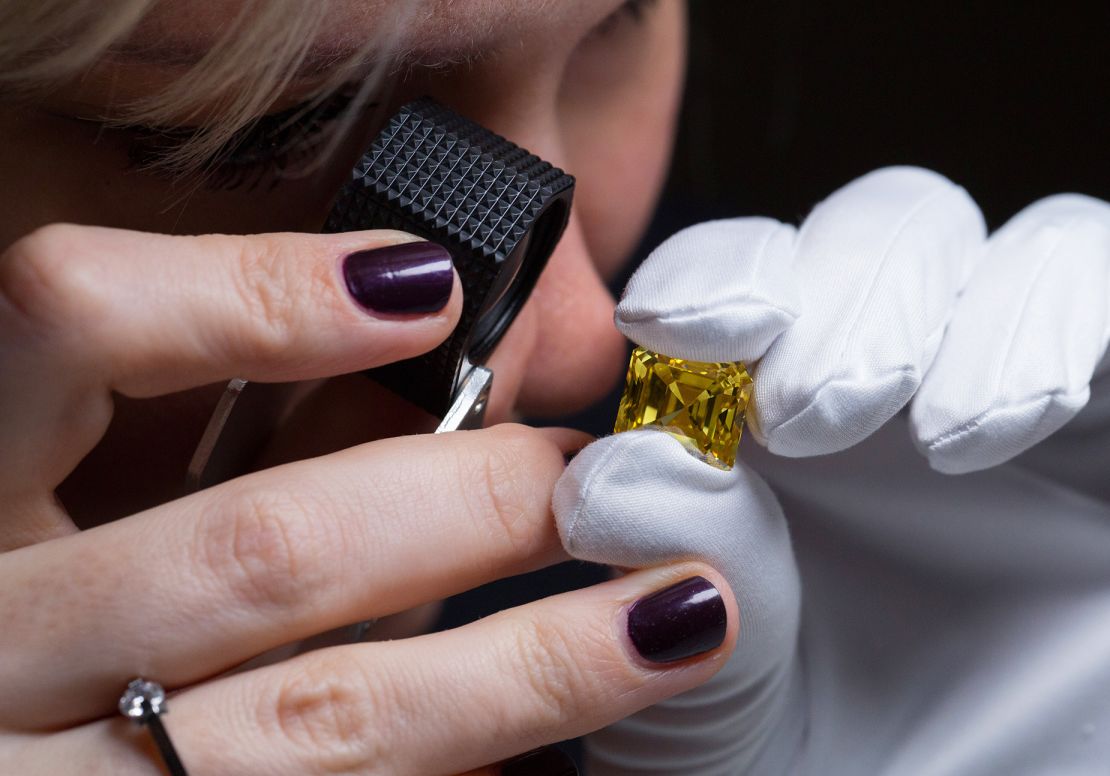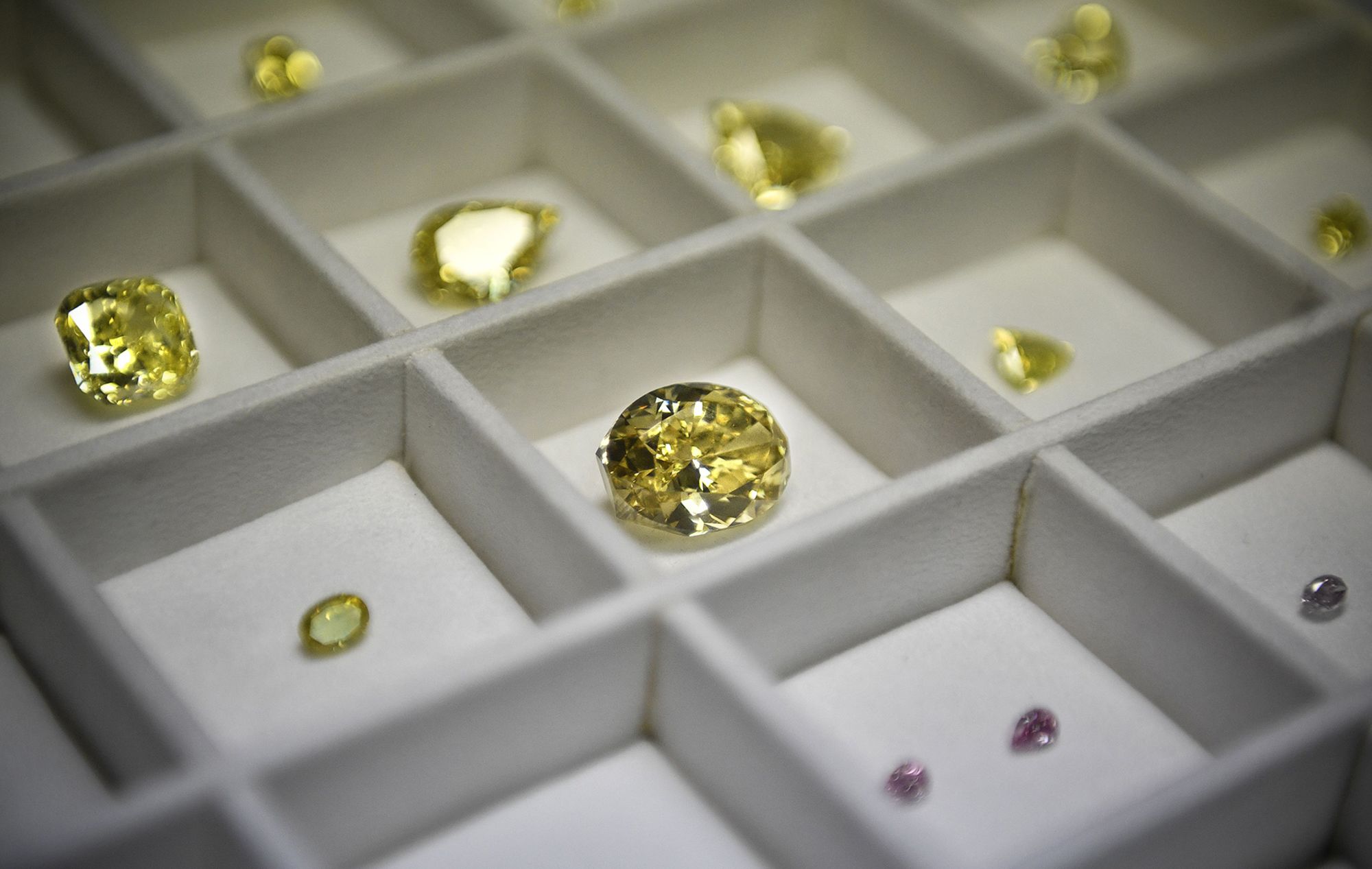Editor’s Note: This article was originally published by The Business of Fashion, an editorial partner of CNN Style.
After close to two years of conflict, the global diamond market is set to feel the full consequences of the war in Ukraine.
The European Union earlier this month added the world’s biggest diamond producer, Russia’s Alrosa, to its sanctions list alongside its CEO, Pavel Alekseevich Marinychev. The new year marked the start of an escalating series of export restrictions on Russian stones coordinated with the G7, which includes the US, UK, Canada and Japan, as well as EU members France, Germany and Italy.
Though some countries had already imposed their own sanctions, figuring out a comprehensive system to effectively police the market proved challenging; diamond traders in Antwerp, the Belgian port city that serves as a major trading hub for the precious stones, had lobbied to slow restrictions on the lucrative business. But now that a sanctions scheme has been agreed, it stands to push through seismic changes in the way the diamond industry operates, imposing new requirements for transparency and traceability in a sector that has historically operated with little of either.
“These sanctions have been in the works for two years now and it took this long because it’s that challenging to come up with a framework that everyone in the industry can effectively adhere to,” said diamond industry analyst Paul Zimnisky.
What do the new sanctions do?
Though the US and UK banned direct imports of rough diamonds from Russia shortly after the war began, stones cut and polished elsewhere in the world had remained fair game — until now.
But as of the start of January, EU and G7 countries have banned the direct purchase of non-industrial diamonds from Russia. This move will be followed by further restrictions on the import of Russian diamonds processed in third countries starting in March. And come September, diamonds sold within the powerful group of countries will need to adhere to a certification scheme to verify where they came from. In Europe, jewelry and watches containing diamonds will be included too.
In other words, even if stones are sent halfway around the world for cutting and polishing, if they originated in Russia they’ll be banned from markets in Europe and the G7. And the industry will need to figure out how to prove it.

How will the sanctions work?
No one seems to really know yet. Diamond supply chains are long and complicated, with stones typically passing through dozens of hands in multiple countries before making it to market.
Keeping track of where stones originated while navigating this web of hard-to-police middlemen is notoriously difficult. That’s particularly true for the smaller diamonds Russia is known for producing, which are typically sold in large quantities and often mixed with other stones from other places.
So far, the EU and G7 have only painted a broad outline of their plans for a system to trace and verify stones’ origins, with a pilot system set to be operational at the beginning of March. Industry groups including the World Diamond Council, Antwerp World Diamond Centre, the Gem and Jewellery Export Council of India and the Gemological Institute of America (GIA) have been working together to develop an effective solution.
“It’s a bit of a work in progress,” said Morgane Winterholer, general manager of strategic brands and sustainability diamond manufacturer Dimexon. “At the moment it is extremely important that the roadmap needs to be developed.”
Technology could help. The GIA is able to triangulate data gathered from a rough stone and match it to finished diamonds, but still relies on documentation of where the stone came from to begin with. De Beers has developed a blockchain based traceability system known as Tracr, while other companies are developing their own offerings.
But none of these solutions are operating at scale and there’s currently no scientific method to trace a diamond right back to the mine.
What does this mean for the diamond industry?
The new sanctions will dramatically accelerate efforts to build traceability into the diamond industry, in a way that will restructure supply chains that stretch around the world.
Big businesses have been preparing for the change. LVMH-owned Tiffany and Richemont both said they stopped sourcing Russian stones shortly after the war in Ukraine broke out. Dimexon has segregated its supply chain to ensure Russian stones don’t reach Western clients, tracking each transaction and relying on direct commercial relationships with mining companies to demonstrate the origin of each package of stones.
These changes have market ramifications too. Russia accounts for roughly one third of the world’s diamond supply, but while Russian stones will likely still end up sparkling in engagement rings, necklaces and tennis bracelets bought by consumers in places outside of the new sanctions regime, the countries that will adhere to the diamond ban account for nearly three quarters of global jewelry demand, according to Zimnisky.
“In the medium- to longer-term, there will be times the industry runs into supply shortages because of this,” he said.
This article was originally published by The Business of Fashion, an editorial partner of CNN Style. Read more stories from The Business of Fashion here.



